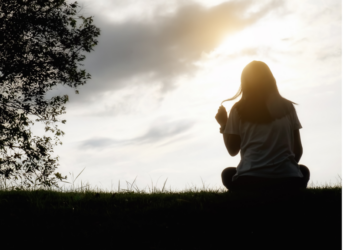“], “filter”: { “nextExceptions”: “img, blockquote, div”, “nextContainsExceptions”: “img, blockquote, a.btn, a.o-button”} }”>
Heading out the door? Learn this text on the brand new Outdoors+ app accessible now on iOS units for members!
>”,”title”:”in-content-cta”,”kind”:”hyperlink”}}”>Obtain the app.
When you think about what to show in your class, likelihood is you focus most of your consideration on the poses and the order during which you plan to sequence them. Maybe you additionally choose a related studying or create a brand new playlist to set the temper. You may even suppose forward to while you’ll dim or brighten the lights, improve or lower the amount of your voice, or go away house for quiet.
However the expertise of yoga is greater than any of those particular person elements. It’s the expertise that you just curate to your college students from the start to finish of sophistication.
There may be one other side of instructing that you just won’t have thought-about. One which has a refined but profound impact on the temper you create. And that’s the phrases you select.
The issue is most of us are taught to share yoga cues in a single means: reciting an inventory of directions concerning the scholars’ place, props, and the aim of the pose. As a trainer, maybe probably the most potent device you’ll be able to share with college students is your voice. Easy modifications in your yoga cues have the potential to utterly change the emotional tenor of sophistication. And the way you do that may create an virtually tangible distinction within the vibe and expertise of your college students.
The Distinction Between Lively and Passive Yoga Cues
There has by no means been one “proper” strategy to cue yoga. However there are two utterly reverse methods to make use of your voice and focus your language as you cue, and every is equally appropriate, relying on the place you’re at in school.
Through the slower starting and ending of sophistication, as you cue poses that hold college students near the mat and shifting slowly, you could instinctively lean on wording that’s extra refined and introspective. All through the extra uplifting and energizing sequences with more difficult poses, you in all probability depend on extra energetic language to intensify the trouble and depth. If that’s the case, you’re already working with passive and energetic yoga cues.
There are extra refined methods the usage of passive and energetic yoga cues can alter the expertise of your class.
Passive Cues
The next approaches to your phrases through the quieter moments in school when motion is gradual or college students are nonetheless.
1. Carry Consciousness to Inner or Sensory Experiences
While you depend on yoga cues that concentrate on inside sensations, you encourage introspection and interoception. Cues reminiscent of “really feel your breath ebb and movement within the heart of your physique” and “sense your shoulders melting down your again” help inward focus.
2. Concentrate on the Passive
Your use of language might help college students tune into poses that require no muscular effort or are assisted by gravity. Because of this, they expertise extra ease and leisure as a substitute of stress or motion. Passive phrases reminiscent of “permit,” “drop,” or “lean” reinforce the sense of give up that some poses invite. For instance, “permit your arms to float down” or “lean the again of your physique into the help of the ground.”
3. Depend on Invitational and Imaginative Language
While you wish to create spaciousness in a pose for college students to discern what they want, together with extra syllables can help your verbal cues. For instance, “sensing,” “imagining,” “exploring,” and “investigating” really feel extra spacious than the extra energetic and and direct verbs “sense,” “think about,” “discover,” or “examine.”
Lively Cues
Your language may help the extra intense movement-oriented sections of sophistication.
1. Cue to Exterior Reference Factors
In the identical means that internally oriented yoga cues draw college students into sensing and feeling, cues that encourage actively interacting with the exterior setting generate depth. For instance, “use your lifted leg to push the again wall away” feels extra particular, actionable, and highly effective than the cue “interact your lifted leg.”
2. Concentrate on Exercise and Engagement
Phrases that suggest deliberate motion can enhance vitality and motivation. Language reminiscent of “press,” “drive,” and “raise” add to the sensation of empowered and intentional motion. For instance, “drive down by means of your ft” and “press the ground away.”
3. Cue Concisely
Via the movement-oriented components of your class, probably the most useful factor you are able to do as a trainer is transfer college students from one place to a different with objective. Though it’s all the time necessary to offer college students room to form their apply to fulfill their very own wants, sooner or later in your instructing, concise and direct cues create a extra supportive and guided expertise than long-winded ones, irrespective of how well-intended.
“Exhale, step your proper foot towards your proper hand” offers extra readability than “exhaling deeply, contract your stomach and curl your bent proper knee towards your chest, stepping your proper foot as evenly as you’ll be able to between your fingers or behind your proper hand or outdoors your proper hand, relying on what feels extra significant for you.”
The truth is, the less syllables you depend on as you share fundamental directional cues to get a physique half to maneuver to a specific place, the extra time there may be to supply the choices and clarifications your college students actually want. Search brevity all over the place. Saying “attain” or “stretch” is extra highly effective than saying “reaching” or “stretching.” To not point out this permits house for college students to tune into their breath—and so that you can connect with yours earlier than you share your subsequent phrases.












